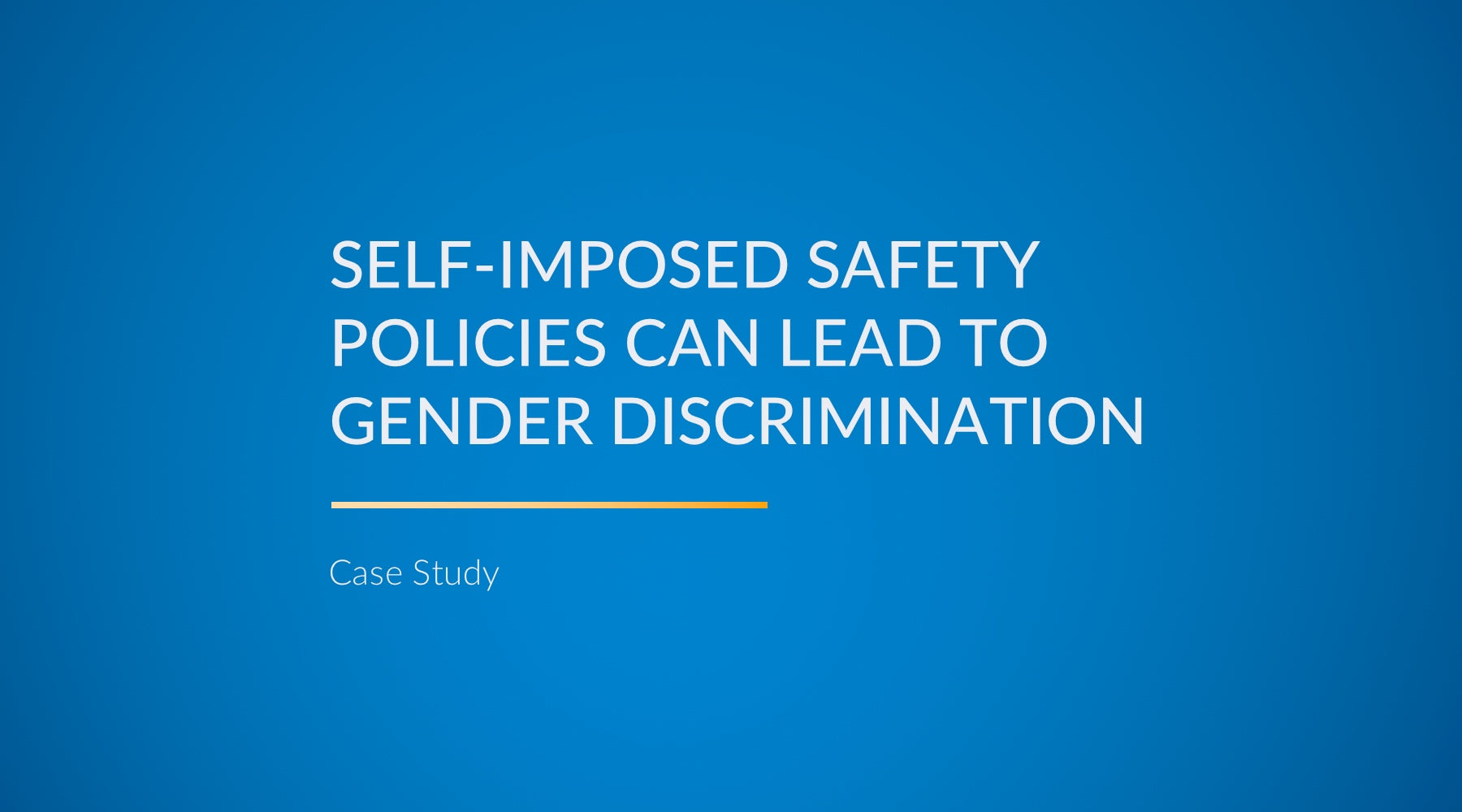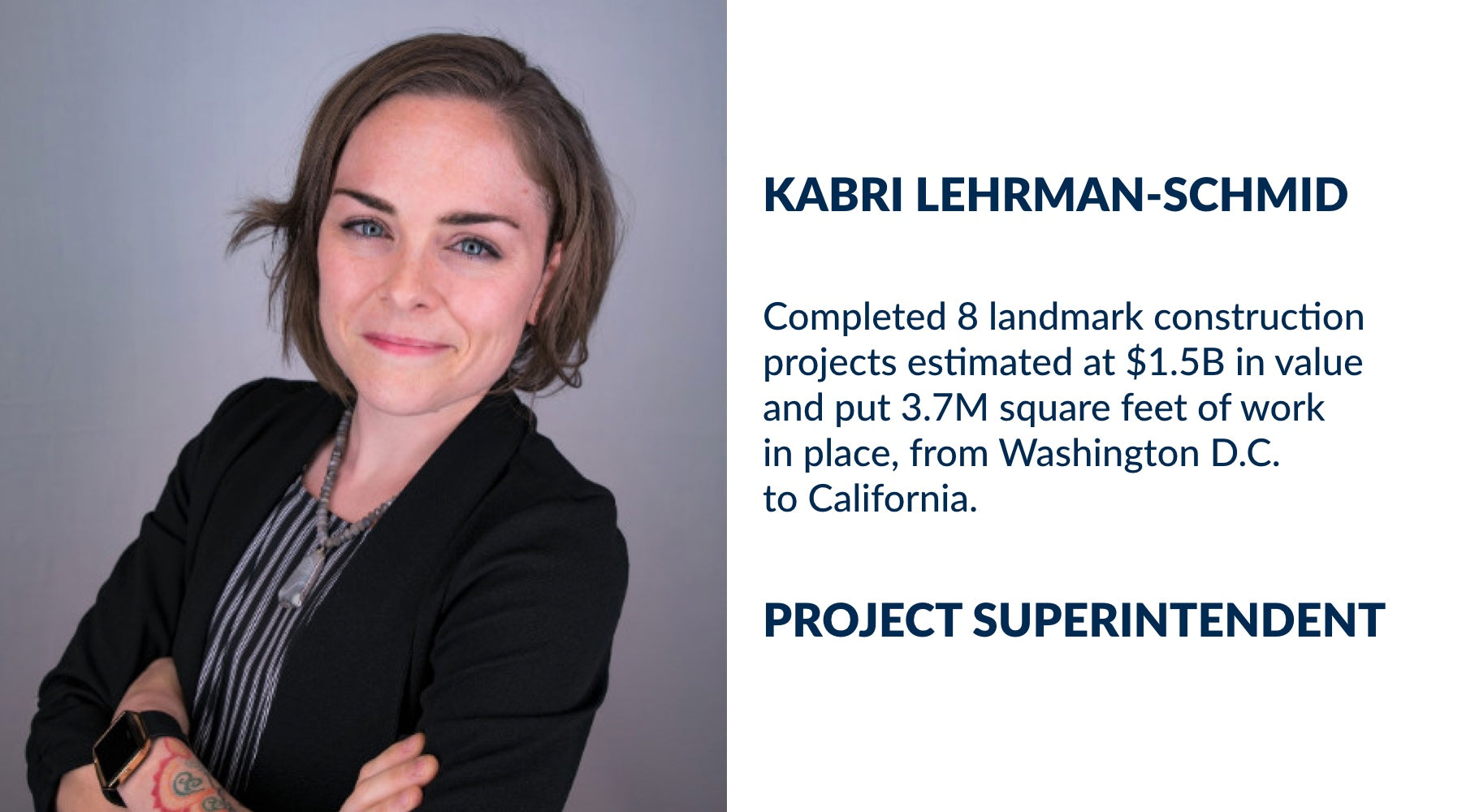
Discriminatory Heel-Height Policies
This is a case study that looks at how corporate heel-height policies can create a double standard leading to gender discrimination as more women choose careers in STEM and manufacturing.
WORKPLACE SAFETY GUIDELINES
OSHA (Occupational Safety and Health Administration) is well-known for guiding workplace safety standards in the U.S. Aside from a few exceptions, workplaces in the United States are required to comply with OSHA standards.
One important standard that OSHA mandates are a set of specific guidelines that all Personal Protective Equipment (PPE) must meet in order to be considered OSHA compliant. PPE is required to be worn by employees to help minimize exposure to hazards that can cause serious personal injury.
OSHA then relies on a few third party organizations to be able to set an objective level of PPE quality and safety: ANSI (American National Standards Institute) and ASTM International (formerly American Society for Testing and Materials). ANSI develops official procedures and then accredits ASTM International to establish and independently test the safety standards of PPE. OSHA accepts and writes these standards into occupational law.
Globally, many countries follow the PPE safety guidelines that are written and enforced by an ANSI accredited organization called the CSA Group.

WHEN REGULATIONS ARE MISSING
While OSHA, ANSI, and ASTM help to improve workplace safety, their guidelines do not cover all topics. When official regulations are missing, some companies empower their safety professionals to establish custom policies that dictate what PPE employers are allowed to wear.
One such example involves safety toe cap footwear. ASTM prescribes a variety of tests, including toe impact and compression, slip and heat resistance, puncture resistance, and static dissipation, among others. However, neither ASTM nor OSHA identifies heel height as a safety concern, listing no recommendations or limitations in their official guidelines.
In this absence of an official ASTM ruling on heel height, many companies adopt the global standard of 60mm (2.36”), prescribed by the CSA Group. There are also companies that choose to create their own self-imposed heel height restrictions that can range widely from less than 1” to over 3.”
The vast majority of safety professionals who author corporate safety policies are men. Writing custom policies that are endorsed by accredited regulatory agencies can enhance workplace safety. However, this practice becomes problematic when policies are written without prescriptive guidance and single out women employees hinting at unconscious gender bias.
Let’s take a look at how the safety footwear heel height policies create a double standard that can lead to inadvertent workplace discrimination.
SAFETY FOOTWEAR FOR WOMEN
Traditional safety footwear, including steel-toed boots, is designed for men with a bulky, masculine look. Instead of developing unique options for women, many established brands simply shrink their men’s styles and change the shoe color.
Beyond the disconnect in style preferences, men and women have different foot anatomies that require a different fit.
As more and more women enter industries with safety shoe requirements, the importance of properly fitted PPE is gaining momentum. Female founded companies such as Xena Workwear are introducing compliant safety footwear specifically designed for women. However, at select organizations, these new products are facing the hurdle of discriminatory PPE policy.

FLAWED HEEL HEIGHT POLICIES AT WORK
Companies with a self-imposed heel height policy of 1” are allowing their employees to wear traditional-looking safety footwear, including popular models that have a heel well over 1.”
Meanwhile, the same companies are singling out their female employees who want to wear more fashionable safety footwear, invoking the exact same heel height policy.


This is a clear example of a double standard that discriminates against female employees who wish to wear new PPE products specifically designed and styled for women while allowing other non-compliant products to be worn.
SAFETY POLICIES NEED TO BE EQUAL
Work policies that lead to gender discrimination (even if inadvertent) may have been easy to overlook in the past, but they are impossible to ignore today when workplace cultures demand equality and inclusivity.
Companies have a moral obligation to treat their women employees equally and they also have a financial incentive to do so. Studies have demonstrated that a gender-diverse workforce provides many organizational benefits including an improved ability to innovate, a higher return on equity, and increased profitability.
Women in male-dominated industries already feel that they must work twice as hard to prove their competency. Companies with gender discriminatory policies will have a difficult time recruiting and retaining their female employees.
As work apparel and PPE evolve to meet the needs of the modern worker, organizations have the opportunity to demonstrate that they are an inviting workplace for workers of all backgrounds by offering their employees choices. When workers wear gear they prefer, that meets standards to protect them, they feel safe and confident. This is the type of work environment that will produce results in a quality and safe manner.

Taking an active stance against workplace discrimination can go a long way toward building a welcoming work culture in an environment where more and more women are considering careers in STEM and Manufacturing.
TAKING PROACTIVE ACTION TODAY
Creating an official safety footwear heel height policy that is inclusive and accommodating to female employees is a great first step toward bringing greater gender equality to the workplace.
The best long-term approach involves Human Resources and Safety professionals working together to ensure that PPE policies are inclusive, safe, and evidence-based. In the absence of OSHA, ANSI, and ASTM guidelines, companies can adopt the international standard of 60mm (2.36”) that has been officially established by the CSA Group.
Alternatively, companies that wish to enforce their own heel height policy need to provide research that clearly demonstrates how this additional PPE restriction is enhancing workplace safety. Afterward, these companies need to ensure that all employees are wearing compliant, PPE safety footwear that meets their self- imposed heel height policy without creating a double standard against women.

This document was created to give women across the country a tool with which to start meaningful conversations with HR departments and Safety Managers about modernizing PPE policies. If you are interested in obtaining the published PDF of this white paper, please don't hesitate to send us a message.
Published by Xena Workwear on December 19th, 2019


